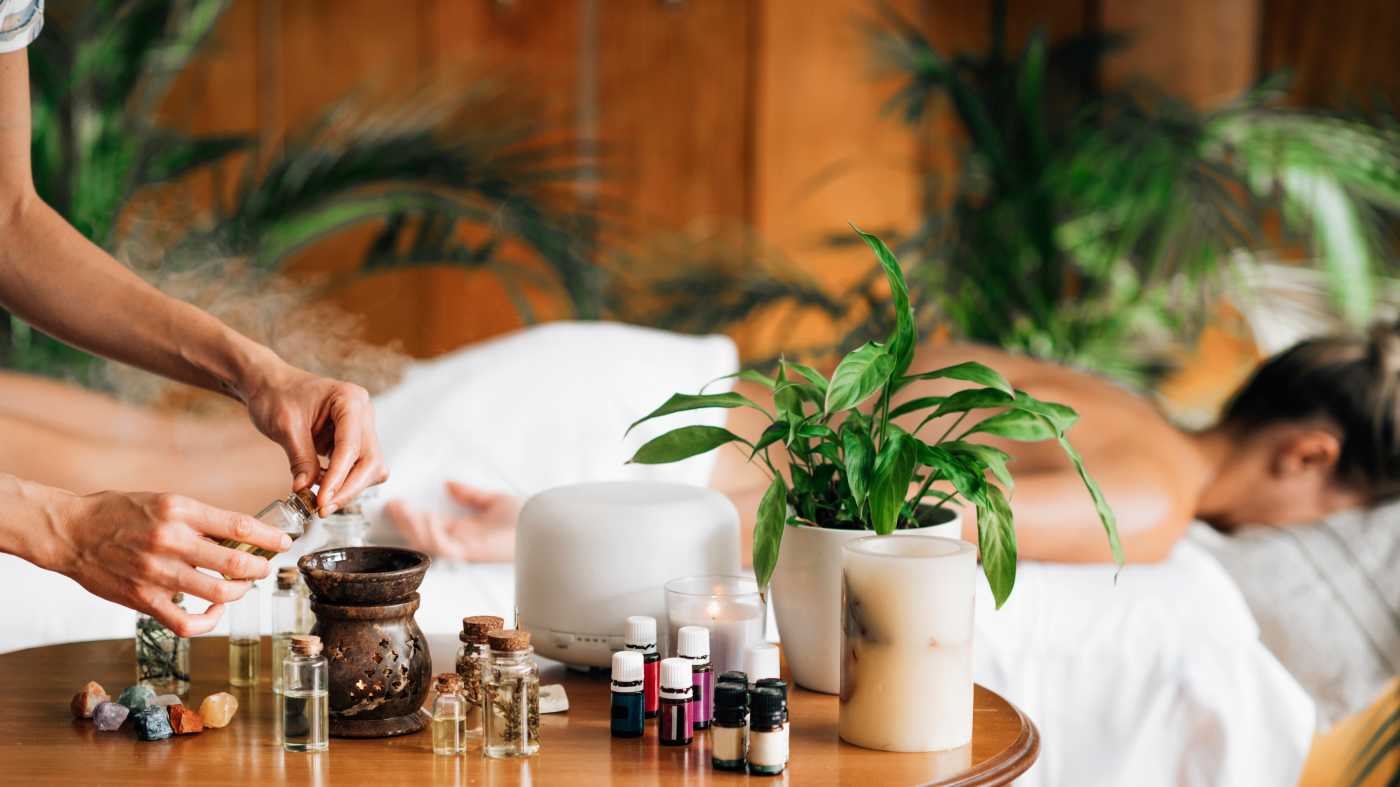Do you struggle with feelings of depression and anxiety? If so, you’re not alone. These conditions affect millions of people and can greatly impact daily life. But there may be a solution that you haven’t yet considered: massage therapy. In this article, we will explore how massage can help alleviate symptoms of depression and anxiety, giving you a natural and holistic approach to improving your mental well-being.
What is Massage?
Massage is a therapeutic practice that involves manipulating the soft tissues of the body to promote relaxation and improve overall well-being. It can be done using various techniques, such as kneading, rubbing, and stroking. Massage helps relieve muscle tension, reduce stress, and alleviate symptoms of anxiety and depression. Additionally, it can improve blood circulation and boost the immune system.
Whether done professionally or at home, massage can be a valuable tool in managing mental health. So, what exactly is massage? It is a holistic approach to healing that provides physical and emotional benefits.
 What are the Different Types of Massage?
What are the Different Types of Massage?
When it comes to using massage as a form of therapy for depression and anxiety, there are various types of massage that can be beneficial. Each type of massage offers a unique approach and technique that can help alleviate symptoms of these mental health conditions. In this section, we will discuss the different types of massage, including Swedish, deep tissue, shiatsu, Thai, and hot stone massage, and how they can be utilized in the treatment of depression and anxiety.
1. Swedish Massage
Swedish Massage is a popular type of massage that involves a series of techniques to promote relaxation and relieve muscle tension.
The following are the steps involved in a Swedish Massage:
- Prepare the massage table with clean linens and create a comfortable environment for the client.
- Inquire about any specific areas of concern or discomfort from the client.
- Apply oil or lotion to the client’s skin to reduce friction during the massage.
- Begin with long, gliding strokes known as effleurage to warm up and relax the muscles.
- Proceed to use kneading techniques, utilizing the palms, fingers, or knuckles to work on deeper layers of muscle.
- Use circular motions with the hands or fingertips for petrissage, which helps to release tension and improve circulation.
- Incorporate tapotement techniques, such as tapping or cupping, to invigorate the muscles.
- Conclude the massage with light, soothing strokes called effleurage to promote relaxation.
Swedish Massage is well-known for its ability to reduce stress, improve blood circulation, and promote overall well-being. It can be a beneficial addition to any treatment plan for depression and anxiety.
2. Deep Tissue Massage
Deep tissue massage is a therapeutic technique that targets deep layers of muscles and connective tissues. It can be beneficial for individuals with chronic pain, muscle tension, or limited range of motion. Here are the steps to incorporate deep tissue massage into your wellness routine:
- Consult with a qualified massage therapist to determine if deep tissue massage is suitable for your specific needs.
- Communicate your goals and areas of concern to the therapist before the session.
- Prepare yourself mentally and physically for a deep tissue massage that may involve deep pressure.
- During the massage, the therapist will use slow, firm strokes along the muscle fibers to address your concerns.
- Expect some discomfort and communicate with the therapist if the pressure is too intense.
- After the session, remember to drink plenty of water to flush out toxins released during the massage.
- Incorporate self-care techniques at home, such as stretching and applying heat or ice to areas of soreness, to continue the benefits of the massage.
Remember to listen to your body and communicate with your therapist throughout the process to ensure a safe and effective deep tissue massage experience.
3. Shiatsu Massage
Shiatsu massage is a traditional Japanese technique that involves applying pressure to specific points on the body to promote relaxation and balance. Here are the steps to experience a Shiatsu massage:
- Find a qualified massage therapist trained in Shiatsu techniques.
- Discuss your specific needs and concerns with the therapist.
- Lie down on a comfortable mat or massage table in a peaceful environment.
- The therapist will use their fingers, palms, and elbows to apply pressure to various points on your body.
- Focus on deep breathing and let go of tension as the therapist works on releasing blocked energy and improving circulation.
- Enjoy the rhythmic movements and gentle stretches incorporated into the Shiatsu massage.
- After the session, take some time to rest and allow the effects of the massage to fully integrate into your mind and body.
Fact: Shiatsu massage has been found to alleviate symptoms of anxiety, reduce muscle tension, and promote overall well-being.
4. Thai Massage
Thai massage, also known as Thai yoga massage, is a traditional healing therapy that combines acupressure, assisted yoga postures, and deep stretching. Here are the steps involved in a Thai massage session:
- Arrive at the spa or massage center and discuss any specific concerns or goals with the therapist.
- Change into loose and comfortable clothing provided by the establishment.
- Lie down on a padded mat on the floor, as Thai massage is typically performed without the use of a massage table.
- The therapist will begin the Thai massage by applying rhythmic pressure along energy lines on the body using their hands, feet, elbows, and knees.
- They will also guide you through a series of yoga-like stretches to improve flexibility and release tension.
- Throughout the massage, communicate with the therapist about pressure preferences and any discomfort you may experience.
- At the end of the session, take a few moments to relax and slowly sit up before getting dressed.
- Drink plenty of water to rehydrate and allow the benefits of the Thai massage to continue.
5. Hot Stone Massage
Hot Stone Massage is a type of massage that incorporates the use of heated stones to provide relaxation and relief. Here are the steps to experience a hot stone massage:
- Choose a reputable spa or massage therapist that offers hot stone massage.
- Arrive early to fill out any necessary paperwork and discuss any concerns or preferences with the therapist.
- Undress to your comfort level and lie down on a massage table, usually covered with a sheet or towel.
- The therapist will first massage your body with their hands to warm up the muscles.
- Hot stones, typically made of basalt, will be placed strategically on your body, such as along the spine or on specific muscles.
- The therapist may also use the stones to massage your body, applying gentle pressure and gliding movements.
- Enjoy the soothing warmth of the stones as they help to relax your muscles and promote blood circulation.
- Communicate with the therapist throughout the session if you need adjustments in pressure, temperature, or any discomfort.
- After the massage, take your time to get up slowly and hydrate to help flush out any toxins released during the session.
Hot Stone Massage can be a great option for relieving muscle tension, promoting relaxation, and improving overall well-being. It is important to consult with a qualified therapist and communicate any health concerns or specific needs before the session.
 How Does Massage Help with Depression and Anxiety?
How Does Massage Help with Depression and Anxiety?
Massage therapy has long been known for its ability to promote relaxation and alleviate physical pain. However, it also has significant benefits for mental health, particularly in reducing symptoms of depression and anxiety. In this section, we will dive into the science behind how massage can help with these conditions. From reducing stress hormones to increasing feel-good neurotransmitters, we will explore the various ways in which massage can positively impact one’s mental well-being.
1. Reduces Stress and Cortisol Levels
Massage therapy has been proven to effectively reduce stress and cortisol levels, promoting relaxation and overall well-being.
- It is important to find a qualified massage therapist who specializes in techniques specifically for stress reduction.
- Scheduling regular massage sessions can help maintain consistent stress relief.
- Be sure to discuss your specific needs and concerns with the therapist to tailor the massage to your individual requirements.
- Practicing self-care techniques at home, such as deep breathing exercises or mindfulness meditation, can also complement the effects of the massage.
2. Increases Serotonin and Dopamine Levels
Massage has been found to have positive effects on those suffering from depression and anxiety by increasing the levels of serotonin and dopamine in the body. These neurotransmitters are essential in regulating mood and emotions. During a massage, the manipulation and pressure applied to muscles can stimulate the release of serotonin and dopamine, leading to feelings of relaxation, happiness, and overall well-being. This natural boost in serotonin and dopamine levels can aid in reducing symptoms of depression and anxiety. It is recommended to incorporate regular massage sessions into a treatment plan for these conditions, but it is important to first consult with a healthcare professional and find a qualified massage therapist for safe and effective treatment.
3. Promotes Relaxation and Better Sleep
Massage is known to promote relaxation and improve sleep, making it a valuable tool for individuals managing symptoms of depression and anxiety. Here are some steps to incorporate massage into a comprehensive treatment plan:
- Consult with a healthcare professional to determine if massage is a suitable option for you.
- Select the appropriate type of massage, such as Swedish or aromatherapy, which are renowned for their relaxation benefits.
- Schedule regular massage sessions to maintain the positive effects on sleep and relaxation.
- Implement self-care techniques at home, such as deep breathing exercises or using calming essential oils, to further enhance the benefits of massage.
Pro-tip: Create a tranquil environment at home by utilizing soft lighting, soothing music, and comfortable bedding to maximize relaxation and improve sleep following a massage session.
4. Releases Muscle Tension and Pain
- Identify the areas of muscle tension and pain in your body.
- Communicate your concerns and specific areas of focus to your massage therapist.
- During the massage, breathe deeply and consciously relax your muscles.
- Allow the therapist to apply appropriate pressure and techniques to release muscle tension and alleviate pain.
- Provide feedback to the therapist regarding your comfort level and any adjustments needed.
To maximize the benefits of releasing muscle tension and pain through massage, it is recommended to:
- Stay hydrated before and after the massage.
- Engage in gentle stretching exercises to maintain muscle flexibility.
- Practice good posture and ergonomics to prevent future muscle tension.
- Incorporate relaxation techniques such as deep breathing and meditation into your daily routine.
- Consider regular massage sessions to maintain muscle health and overall well-being.
 What are the Benefits of Using Massage for Depression and Anxiety?
What are the Benefits of Using Massage for Depression and Anxiety?
In recent years, massage therapy has gained recognition as a potential treatment for depression and anxiety. But what exactly are the benefits of using massage for these mental health conditions? In this section, we will explore the various advantages of incorporating massage into a treatment plan for depression and anxiety. From its non-invasive and natural approach to its ability to be customized for individual needs, we will discuss the unique benefits that massage can offer for those struggling with these common mental health issues.
1. Non-invasive and Natural Treatment Option
Massage therapy is a non-invasive and natural treatment option for managing depression and anxiety. To incorporate massage into a treatment plan, follow these steps:
- Consult with a healthcare professional to determine if massage is appropriate for your condition.
- Choose the right type of massage based on your specific needs and preferences.
- Schedule regular massage sessions to experience the cumulative benefits over time.
- Practice self-care techniques at home, such as deep breathing or meditation, to enhance the effects of the massage.
2. Can be Used in Conjunction with Other Treatments
When dealing with depression and anxiety, it can be beneficial to incorporate massage therapy into your treatment plan and complement other treatments. Here are some steps to consider:
- Consult with your healthcare professional to ensure that massage is safe for you and aligns with your treatment goals.
- Select the right type of massage based on your needs and preferences. Options like Swedish, deep tissue, or shiatsu may work well.
- Schedule regular massage sessions to maintain consistency and maximize the benefits.
- Practice self-care techniques at home, such as deep breathing exercises or gentle stretching, to further enhance the effects of massage.
- Remember, massage therapy should be used in conjunction with other treatments, such as therapy or medication, to create a comprehensive approach to managing depression and anxiety.
3. Can Help Improve Overall Well-being
Massage therapy can greatly improve overall well-being in a variety of ways. To incorporate massage into your self-care routine, consider following these steps:
- Consult with a healthcare professional to determine if massage is suitable for your condition.
- Select the appropriate type of massage that aligns with your specific needs and preferences.
- Make regular appointments to experience the cumulative benefits of massage.
- Practice self-care techniques at home, such as stretching, deep breathing, or using a massage ball, to complement the effects of professional massage.
By following these steps, you can enhance your overall well-being and enjoy the therapeutic benefits of massage. Remember to prioritize self-care and listen to your body’s needs.
4. Can be Customized to Individual Needs
- Discuss your specific needs and concerns with the massage therapist.
- Communicate your preferences regarding pressure, areas of focus, and any specific techniques you prefer.
- Inform the therapist about any injuries, medical conditions, or sensitivities you may have.
- Ask the therapist to adjust the massage to your comfort level during the session.
- Request modifications such as adding or reducing pressure, using different massage techniques, or focusing on specific areas if needed.
Pro-tip: Regularly communicate with your massage therapist to ensure that the massage can be customized to your individual needs and preferences.
 What are the Risks and Precautions of Using Massage for Depression and Anxiety?
What are the Risks and Precautions of Using Massage for Depression and Anxiety?
While massage has been shown to have potential benefits for those suffering from depression and anxiety, it is important to be aware of the potential risks and precautions associated with this treatment. In this section, we will discuss the possible side effects of using massage for depression and anxiety, as well as conditions for which it is not recommended. Additionally, we will stress the importance of finding a qualified and experienced massage therapist to ensure safe and effective treatment.
1. Possible Side Effects
Using massage for depression and anxiety can have potential side effects that individuals should be aware of. Here are some possible side effects to consider:
- Soreness: It is common to experience muscle soreness or tenderness after a deep tissue massage.
- Fatigue: Some individuals may feel tired or fatigued after a massage session.
- Headaches: In rare cases, certain massage techniques may trigger headaches or migraines.
- Emotional Release: Massage can sometimes bring up emotional responses, such as crying, due to the release of stored emotions.
- Allergic Reactions: Individuals with allergies or sensitive skin may experience skin reactions to massage oils or lotions.
It is important to discuss any concerns or potential side effects with a qualified massage therapist or healthcare professional before incorporating massage into a treatment plan for depression and anxiety.
2. Not Recommended for Certain Conditions
- Pregnancy: Massage may not be recommended during the first trimester, and certain techniques should be avoided throughout the entire pregnancy.
- Recent Injury or Surgery: Massage may not be recommended for recently injured or operated areas, as it may hinder the healing process or cause discomfort.
- Infectious Skin Conditions: Contagious skin conditions like ringworm or impetigo should be treated before receiving a massage, as they can spread during the session.
- Severe Chronic Health Conditions: Individuals with conditions such as cancer, heart disease, or severe osteoporosis should consult with their healthcare provider before receiving massage therapy.
- Blood Clotting Disorders: Massage may not be recommended for individuals with clotting disorders, such as deep vein thrombosis, as it can dislodge blood clots or increase the risk of clot formation.
In ancient China, massage was considered an integral part of medical treatment. The Yellow Emperor’s Inner Canon, written around 2700 BCE, documented various massage techniques that were used to promote health and treat ailments.
3. Importance of Finding a Qualified Massage Therapist
Finding a qualified massage therapist is crucial for a safe and effective treatment. Here are key reasons why it’s important:
- Expertise: Qualified therapists have undergone proper training, possess extensive knowledge, and have honed their skills to provide appropriate massages.
- Safety: They are well-versed in applying techniques correctly, preventing potential injuries or adverse reactions.
- Individualized Approach: Qualified therapists have the ability to assess your specific needs and customize the massage accordingly.
- Ethical Standards: They adhere to professional ethics, ensuring your comfort, privacy, and confidentiality are respected.
- Professional Network: They may have connections to other healthcare professionals, allowing for a holistic approach to your well-being.
 How Can Someone Incorporate Massage into their Treatment Plan for Depression and Anxiety?
How Can Someone Incorporate Massage into their Treatment Plan for Depression and Anxiety?
As more and more people seek alternative forms of therapy for depression and anxiety, massage has emerged as a popular choice. But how exactly can massage be incorporated into a treatment plan for these mental health disorders? In this section, we will discuss the steps one can take to effectively use massage as a form of treatment. From consulting with a healthcare professional to practicing self-care techniques at home, we will explore the various ways in which massage can be integrated into a holistic approach towards managing depression and anxiety.
1. Consult with a Healthcare Professional
It is crucial to consult with a healthcare professional when considering incorporating massage into a treatment plan for depression and anxiety. They can provide expert guidance and ensure that massage is appropriate and beneficial for your specific situation. To ensure the best results, follow these steps:
- Schedule an appointment with your healthcare professional to discuss your symptoms and treatment goals.
- Inform them about your interest in using massage as part of your treatment plan.
- Discuss any concerns, medical conditions, or medications that may affect the use of massage.
- Ask for recommendations or referrals for qualified massage therapists who specialize in treating depression and anxiety.
Remember, the advice and expertise of a healthcare professional are essential in determining the most effective and safe treatment options for your mental health.
In ancient times, massage was recognized for its therapeutic benefits. The Chinese, Egyptians, and Greeks all practiced various forms of massage. Hippocrates, the father of medicine, wrote extensively about massage techniques and their healing properties. Today, massage continues to be a valuable tool in promoting overall well-being and managing mental health conditions like depression and anxiety.
2. Choose the Right Type of Massage
Choosing the right type of massage is crucial in maximizing the benefits and addressing specific needs. Here are some steps to help you select the appropriate massage:
- Evaluate your goals: Determine if you’re seeking relaxation, pain relief, or specific therapy.
- Research different types: Explore various massage techniques such as Swedish, deep tissue, shiatsu, Thai, or hot stone massage.
- Consider your preferences: Reflect on your comfort level with pressure, techniques used, and areas of focus.
- Consult with a professional: Seek guidance from a qualified massage therapist who can recommend the best option based on your goals and individual needs.
3. Schedule Regular Sessions
Scheduling regular massage sessions is crucial for experiencing the full benefits of depression and anxiety relief. Follow these steps to incorporate regular sessions into your treatment plan:
- Consult with a healthcare professional to determine the recommended frequency of sessions.
- Choose the appropriate type of massage that aligns with your needs and preferences.
- Book regular sessions, whether it’s weekly, bi-weekly, or monthly.
- Practice self-care techniques at home to maintain the benefits in between sessions.
True story: Sarah struggled with anxiety and decided to schedule regular massage sessions as part of her treatment plan. With weekly sessions, she noticed a significant decrease in her anxiety symptoms and an overall improvement in her well-being. Massage became an essential component of her self-care routine, providing her with much-needed relaxation and relief.
4. Practice Self-care Techniques at Home
Practicing self-care techniques at home can complement professional massage therapy for depression and anxiety:
- Create a calming environment by dimming lights and playing soothing music.
- Use aromatherapy with essential oils like lavender or chamomile.
- Engage in deep breathing exercises to promote relaxation.
- Practice mindfulness or meditation to quiet the mind.
Fact: Incorporating self-care techniques at home, such as deep breathing exercises and mindfulness or meditation, can enhance the benefits of massage therapy. This can promote overall well-being and reduce symptoms of depression and anxiety.
Frequently Asked Questions
What is massage therapy for depression and anxiety?
Massage therapy for depression and anxiety is a type of alternative medicine that involves manipulating the muscles and soft tissues of the body to promote relaxation, reduce stress, and alleviate symptoms of depression and anxiety.
What are the benefits of massage therapy for depression and anxiety?
Massage therapy has been shown to reduce levels of stress hormones and increase levels of feel-good hormones like serotonin and dopamine. It can also improve sleep, reduce muscle tension, and promote an overall sense of well-being.
Is massage therapy a substitute for traditional treatment for depression and anxiety?
No, massage therapy should not be used as a substitute for traditional treatments for depression and anxiety. It is best used as a complementary therapy to help manage symptoms and improve overall mental health.
How often should I receive massage therapy for depression and anxiety?
The frequency of massage therapy for depression and anxiety varies depending on individual needs and preferences. Some people may benefit from weekly sessions, while others may only need monthly sessions. It is important to discuss this with your massage therapist and mental health provider.
Are there any risks or side effects of massage therapy for depression and anxiety?
Generally, massage therapy is considered safe for most people. However, individuals with certain medical conditions or injuries may experience side effects such as temporary soreness or bruising. It is important to discuss any concerns with your massage therapist before starting treatment.
How do I find a qualified massage therapist for depression and anxiety?
To find a qualified massage therapist for depression and anxiety, it is important to do some research and ask for recommendations from trusted sources. You can also ask your mental health provider or primary care physician for referrals. It is important to choose a therapist who is licensed and has experience working with clients who have depression and anxiety.



